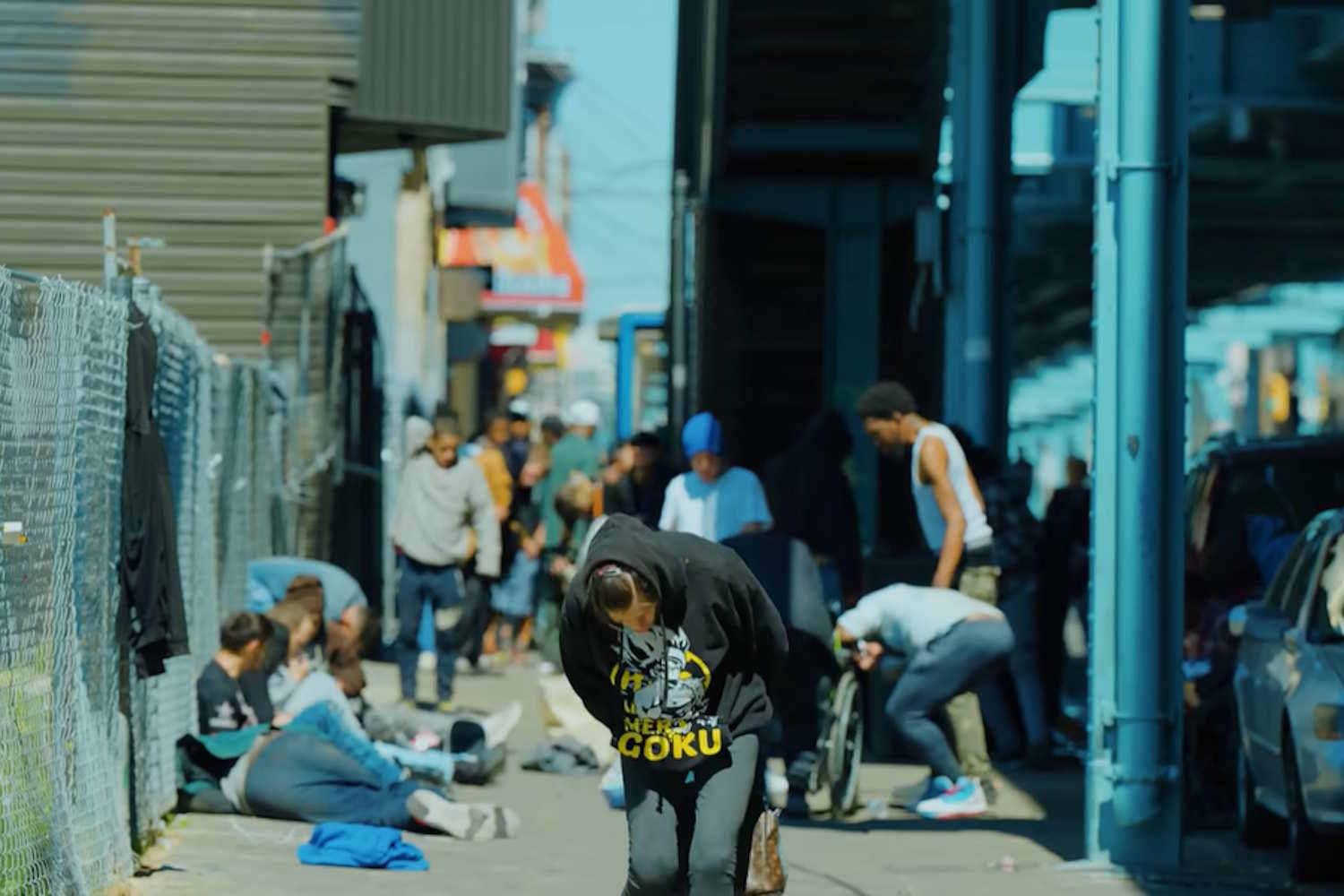Philadelphia’s Kensington is ground zero for America’s fentanyl crisis: open-air drug markets, staggering overdose rates, and fragile attempts at recovery.

@YouTube
An army of zombies, swaying on their feet or bent into absurd poses, stranded at the side of the road. Living a journey entirely of their own. And dying.
What’s happening in Philadelphia, and in other U.S. cities like San Francisco, has been captured in hundreds of social media videos that are as painful to watch as they are unforgettable. The nation is in the grip of a drug crisis without precedent. Substances laced with fentanyl—and increasingly xylazine, an animal tranquilizer—are turning people into slack-bodied, semi-conscious figures, staggering or frozen in place. Oblivious to the world around them, in broad daylight as much as in the middle of the night.
Kensington, the epicenter
The most harrowing images come from Kensington, once a proud working-class neighborhood, home to the Stetson hat factory and a community of shipyard and factory workers. Today, it has morphed into a ground zero of addiction and violence.
They call it America’s Zombieland.
The northern half of Kensington is among the country’s largest open-air drug markets, where violence and prostitution are a near-constant backdrop. Streets are dotted with tent encampments, makeshift shelters, and clusters of people utterly disconnected from reality. Along Kensington Avenue—just under two miles long (about 3 km)—authorities estimate there are at least 80 active drug-selling spots, generating over $1 billion a year in illegal trade.
What the city is trying to do
In April 2024, Philadelphia’s mayor Cherelle L. Parker announced the Kensington Community Revival (KCR) plan. It calls for clearing encampments, offering shelters and aid, targeted arrests for drug dealing and use, securing cleaned-up areas with patrols and barriers, returning control of streets to residents through community investments, and eventually scaling down the police presence.
But is it enough? Of course not.
The hardest part is introducing effective recovery programs, to ensure the homeless aren’t simply pushed from one corner to another. That’s why “harm reduction” has emerged as a more realistic solution. Early 2025 saw the opening of the Riverview Wellness Village, a facility designed for long-term recovery. It offers addiction treatment to people who’ve already completed at least 30 days of detox, allowing them to stay up to a year to stabilize and rebuild their lives.
Progress is visible in patches, but the road ahead remains long and demands constant cooperation across government, health, and community groups.
How fentanyl became an epidemic
Fentanyl began as a legitimate painkiller, approved by the FDA for post-surgical care or advanced cancer. But the drug’s **sheer potency—50 times stronger than heroin and 100 times stronger than morphine—**made it lethal once it slipped into the illegal market.
Why is it so widely used? The reasons intertwine:
Fentanyl taps directly into the brain’s reward system, producing deep relaxation and euphoria. It’s cheap and powerful, so even tiny quantities yield many doses, multiplying profits for traffickers. The U.S. opioid crisis of the 1990s and early 2000s, fueled by excessive prescriptions, left a vast pool of dependent patients. When regulators finally cracked down, many turned to street drugs. Dealers seized the opportunity, and fentanyl became their most profitable weapon.
Because it’s synthetic, fentanyl doesn’t rely on poppy fields or harvest cycles. It can be produced cheaply in labs, a fact that has not gone unnoticed by Mexican cartels and global traffickers. More alarming still, fentanyl is often mixed into cocaine, heroin, or counterfeit pills, frequently without the buyer’s knowledge. This toxic cocktail multiplies the risk of fatal overdoses and expands the drug’s reach beyond traditional users.
Some experts even speculate about a geopolitical angle: in a world of fragile supply chains and shifting conflicts, a drug so easy to produce and smuggle can act as an “improvised weapon” in the balance of global power.
The result is a perfect storm: a substance that is cheap, deadly, and almost impossible to contain once unleashed.
The human cost
The question now is painfully simple: how do you turn back?
Between used syringes and lifeless bodies, there are thousands of forgotten lives in Kensington and beyond. Each one a story that could have gone differently, if only the system had intervened sooner. The fentanyl crisis has become more than a public health emergency. It is, by every measure, a national tragedy.
